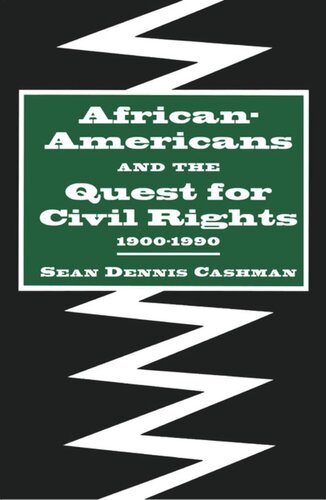

Most ebook files are in PDF format, so you can easily read them using various software such as Foxit Reader or directly on the Google Chrome browser.
Some ebook files are released by publishers in other formats such as .awz, .mobi, .epub, .fb2, etc. You may need to install specific software to read these formats on mobile/PC, such as Calibre.
Please read the tutorial at this link: https://ebookbell.com/faq
We offer FREE conversion to the popular formats you request; however, this may take some time. Therefore, right after payment, please email us, and we will try to provide the service as quickly as possible.
For some exceptional file formats or broken links (if any), please refrain from opening any disputes. Instead, email us first, and we will try to assist within a maximum of 6 hours.
EbookBell Team

0.0
0 reviewsIn this lavishly illustrated volume, Sean Dennis Cashman surveys the history of civil rights in twentieth-century America. The book charts the principal course of civil rights against the dramatic backdrop of two world wars, the Great Depression, the affluent society of the postwar world, the cultural and social agitation of the 1960s, and the emergence of the new conservatism of the 1970s and 1980s.
Cashman describes the profound upheaval that African-Americans experienced as they moved from the outright racism of the South through the Great Migration northward from 1915, and sets the contribution of African-American leaders within their historical context: Booker T. Washington, W. E. B. Du Bois, Marcus Garvey, A. Philip Randolph, Malcolm X, Martin Luther King, and many others. The work also describes the shift in emphasis in the movement from legal cases brought before the courts to mass protest movements and, later, the change in direction from civil rights to Black Power and, later, Pan-Africanism.
Far more than just a history of civil rights leaders, this book explains how the achievements of African-American writers, artists, singers, and athletes contributed to a wider understanding of the humanity and culture of black Americans. Cashman details, among others, the achievements of the Harlem Renaissance, the films of Paul Robeson and Marian Anderson, and the works of Langston Hughes, Ralph Ellison, James Baldwin, and Toni Morrison. Written in an engaging style, the text is accompanied by a wealth of illustrations, some well known, others in print for the first time.